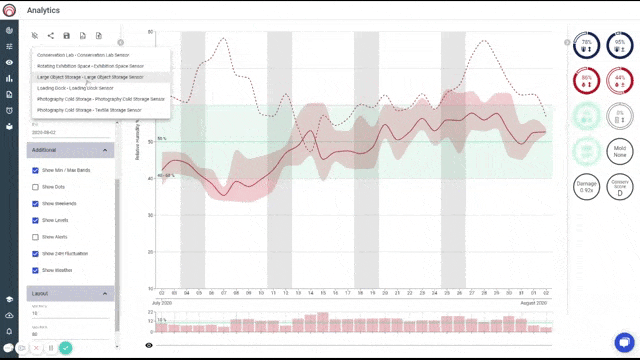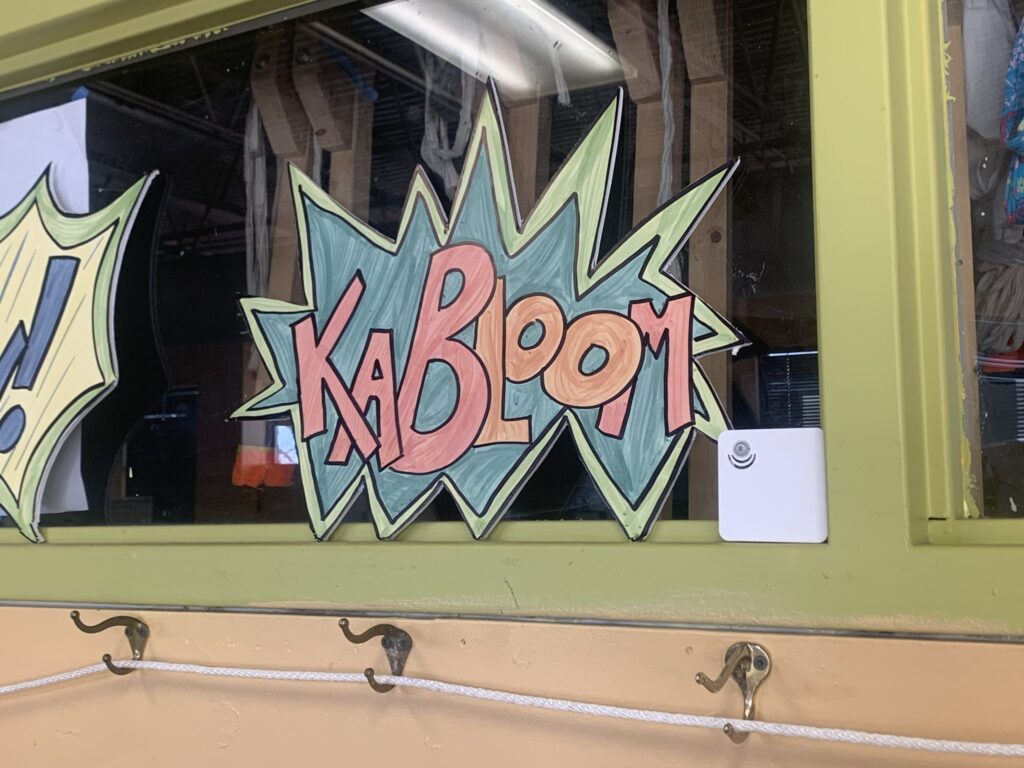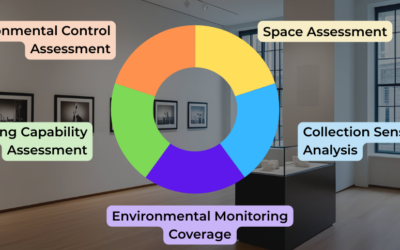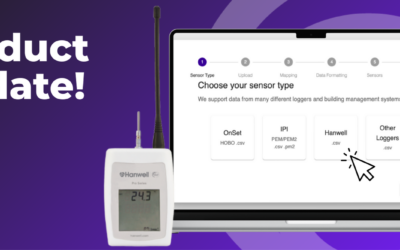Our guest blogger is Maddie Cooper. She is a National Endowments for the Humanities Graduate Fellow in Preventive Conservation at the Winterthur/University of Delaware Program in Art Conservation, and she is spending her final year of graduate school as a Fellow in the Preventive Conservation Department at the Midwest Art Conservation Center. Maddie spends a large portion of her time working with small institutions to foster preservation through surveys, planning, and training. Read her tips on how to secure grant funding for environmental monitoring projects below.

Maddie Cooper, National Endowments for the Humanities Graduate Fellow in Preventive Conservation. Read her tips on grant funding for environmental monitoring projects.
I find that the terms ‘conservation’ and ‘preservation’ often bring to mind conservators in lab coats working in the landmark museums across the country. The reality is, however, that most of the preservation work in the U.S. is carried out by the volunteers and staff who work in small institutions. A 2014 survey by the Institute of Museum and Library Services (IMLS) found that 96% of U.S. collecting institutions are small. These small collections are more likely to have staff and volunteers that wear multiple hats including preservation activities like maintaining collections records, housekeeping, and ensuring a safe storage and exhibition environment.
As a Graduate Fellow in the Preventive Conservation Department at the Midwest Art Conservation Center (MACC), the majority of my projects involve working with small institutions. These projects range from general assessment surveys to developing resources and teaching workshops, but environmental monitoring is a thread that runs through most of what I do. Lots of folks know that temperature, relative humidity, and light exposure affect collections, but developing an environmental monitoring program can be intimidating, especially for professionals who already have a lot on their plates.
One large barrier to developing an environmental monitoring program is the cost of purchasing data loggers and software. It is common for small institutions to not allocate much or any funding in their annual budgets to preservation projects, not to mention the acute economic impact of COVID-19 on small museums, libraries, and archives. While I always encourage internal funding for preservation activities, grants from federal, state, and private organizations are an excellent resource for subsidizing environmental monitoring equipment and training.
The following is a list of tips for small institutions looking to grant fund an environmental monitoring project:
1. Choose the Right Grant
The first step in grant funding a project like this is choosing the right grant to apply for. Lists of grants that focus on preservation projects including historic preservation, emergency planning, conservation treatment, etc. can be found in a few places online including the following websites:
- MACC’s active list of Federal preservation grants and deadlines
- Fundraising Assistance through the Center for the Conservation of Historic Artifacts
- The American Institute for Conservation’s funding resources
While some of these lists include state resources, it is good practice to always reach out to state and local historical societies/historic preservation offices to inquire about localized funding sources.
When looking to fund environmental monitoring projects specifically, check for language in grant descriptions or notice of funding opportunities like: “collections care projects”, “environmental improvements”, or “preservation supplies/equipment”. Make sure your institution is eligible for the grant in question and check to see whether matching is required.
2. Communicate with Grants Managers
Once you find a grant that looks appropriate, reach out to the Grants Manager listed in the description. Grants Managers are usually happy to answer questions about eligibility, discuss projects, and even look over drafts of applications. They have specific knowledge of the program, the application requirements, and the projects that have and have not been funded in the past, and they are there to help you! Regional conservation centers often offer grant writing assistance to those who are looking for some extra support. The following centers offer grant writing assistance:
- Midwest Art Conservation Center (Minneapolis)
- Conservation Center for Art and Historic Artifacts (Philadelphia)
- Balboa Art Conservation Center (San Diego)
- ICA Art Conservation (Cleveland)
- Northeast Document Conservation Center (Andover)
3. Reference Your Mission
A reference to “preservation” or “collections care” in an institutional mission is extremely powerful when it comes to grant funding preservation projects. Including this language in a mission signals to funders that your organization is committed to sustained collections care. If your organization includes this language, point it out to reviewers in your application. If not, consider the addition if it makes sense for the institution.
4. Reference Surveys, Assessments and Long-Range Preservation Plans
Preservation or conservation assessments are powerful tools that help cultural institutions improve preservation and plan for the future. These assessments help to prioritize projects and inform an organization’s long range preservation plan. Referencing these documents lets granting organizations know that the proposed project is part of a larger plan to care for collections. If your institution has not had a preservation/conservation assessment done at all, or has an assessment that is out of date, consider pursuing a survey by a trusted assessor before funding a specific project. Programs like the Collections Assessment for Preservation Program and Preservation Assistance Grants for Smaller Institutions are designed to help collecting institutions access these assessments.
Developing an environmental monitoring program is one of the best ways to facilitate preservation in your collection. Grant funding is a great way to kickstart your project, and it doesn’t have to be intimidating! Use these tips to get started and for more information, check out this roundup of resources from NEDCC.
If you have any questions about environmental monitoring, integrated pest management, or just want to talk about preventative conservation, please reach out to us! Don’t forget to check out our blog or join our community of collections care professionals where you can discuss hot topics, connect with other conservators or even take a course to get familiar with the Conserv platform.





